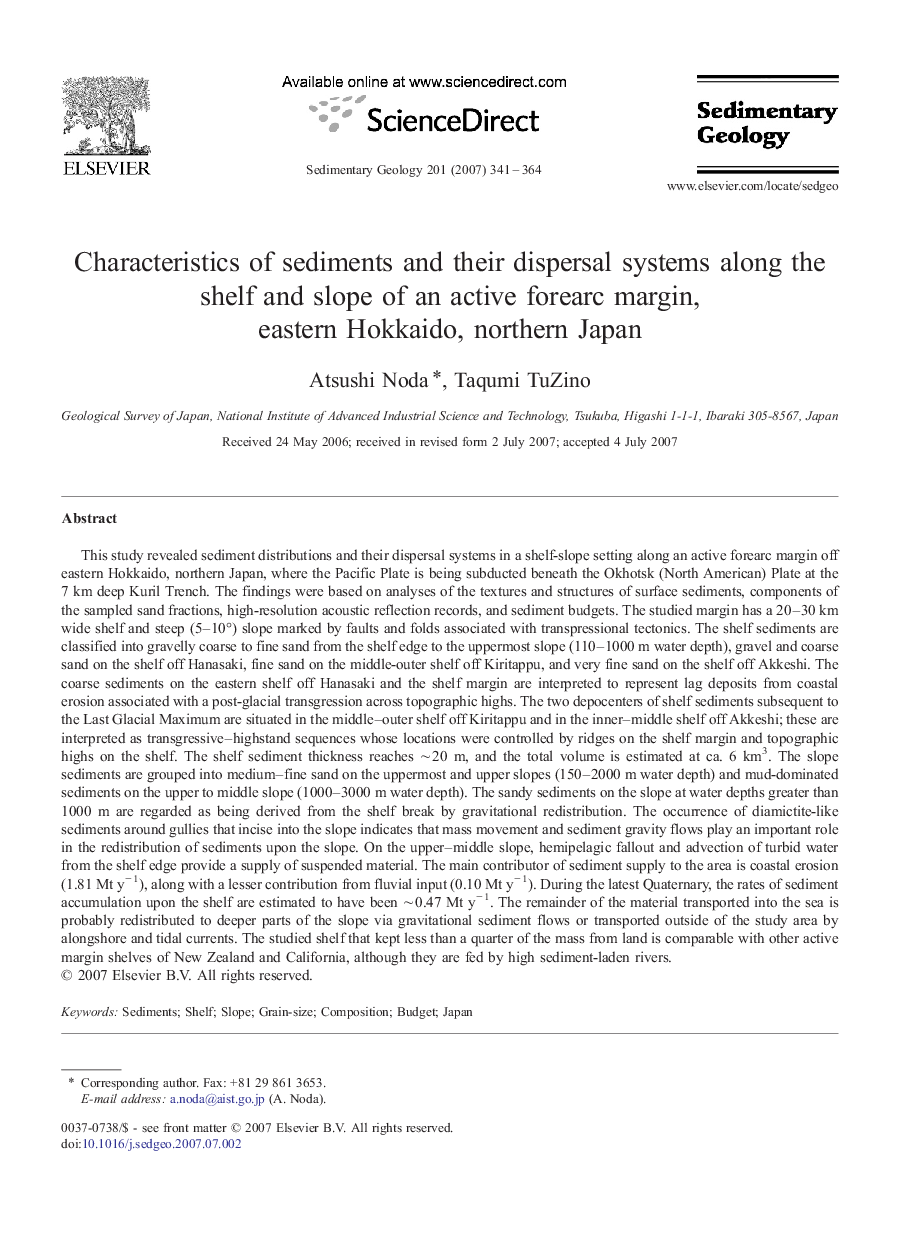| کد مقاله | کد نشریه | سال انتشار | مقاله انگلیسی | نسخه تمام متن |
|---|---|---|---|---|
| 4690761 | 1636163 | 2007 | 24 صفحه PDF | دانلود رایگان |

This study revealed sediment distributions and their dispersal systems in a shelf-slope setting along an active forearc margin off eastern Hokkaido, northern Japan, where the Pacific Plate is being subducted beneath the Okhotsk (North American) Plate at the 7 km deep Kuril Trench. The findings were based on analyses of the textures and structures of surface sediments, components of the sampled sand fractions, high-resolution acoustic reflection records, and sediment budgets. The studied margin has a 20–30 km wide shelf and steep (5–10°) slope marked by faults and folds associated with transpressional tectonics. The shelf sediments are classified into gravelly coarse to fine sand from the shelf edge to the uppermost slope (110–1000 m water depth), gravel and coarse sand on the shelf off Hanasaki, fine sand on the middle-outer shelf off Kiritappu, and very fine sand on the shelf off Akkeshi. The coarse sediments on the eastern shelf off Hanasaki and the shelf margin are interpreted to represent lag deposits from coastal erosion associated with a post-glacial transgression across topographic highs. The two depocenters of shelf sediments subsequent to the Last Glacial Maximum are situated in the middle–outer shelf off Kiritappu and in the inner–middle shelf off Akkeshi; these are interpreted as transgressive–highstand sequences whose locations were controlled by ridges on the shelf margin and topographic highs on the shelf. The shelf sediment thickness reaches ∼ 20 m, and the total volume is estimated at ca. 6 km3. The slope sediments are grouped into medium–fine sand on the uppermost and upper slopes (150–2000 m water depth) and mud-dominated sediments on the upper to middle slope (1000–3000 m water depth). The sandy sediments on the slope at water depths greater than 1000 m are regarded as being derived from the shelf break by gravitational redistribution. The occurrence of diamictite-like sediments around gullies that incise into the slope indicates that mass movement and sediment gravity flows play an important role in the redistribution of sediments upon the slope. On the upper–middle slope, hemipelagic fallout and advection of turbid water from the shelf edge provide a supply of suspended material. The main contributor of sediment supply to the area is coastal erosion (1.81 Mt y− 1), along with a lesser contribution from fluvial input (0.10 Mt y− 1). During the latest Quaternary, the rates of sediment accumulation upon the shelf are estimated to have been ∼ 0.47 Mt y− 1. The remainder of the material transported into the sea is probably redistributed to deeper parts of the slope via gravitational sediment flows or transported outside of the study area by alongshore and tidal currents. The studied shelf that kept less than a quarter of the mass from land is comparable with other active margin shelves of New Zealand and California, although they are fed by high sediment-laden rivers.
Journal: Sedimentary Geology - Volume 201, Issues 3–4, 15 October 2007, Pages 341–364